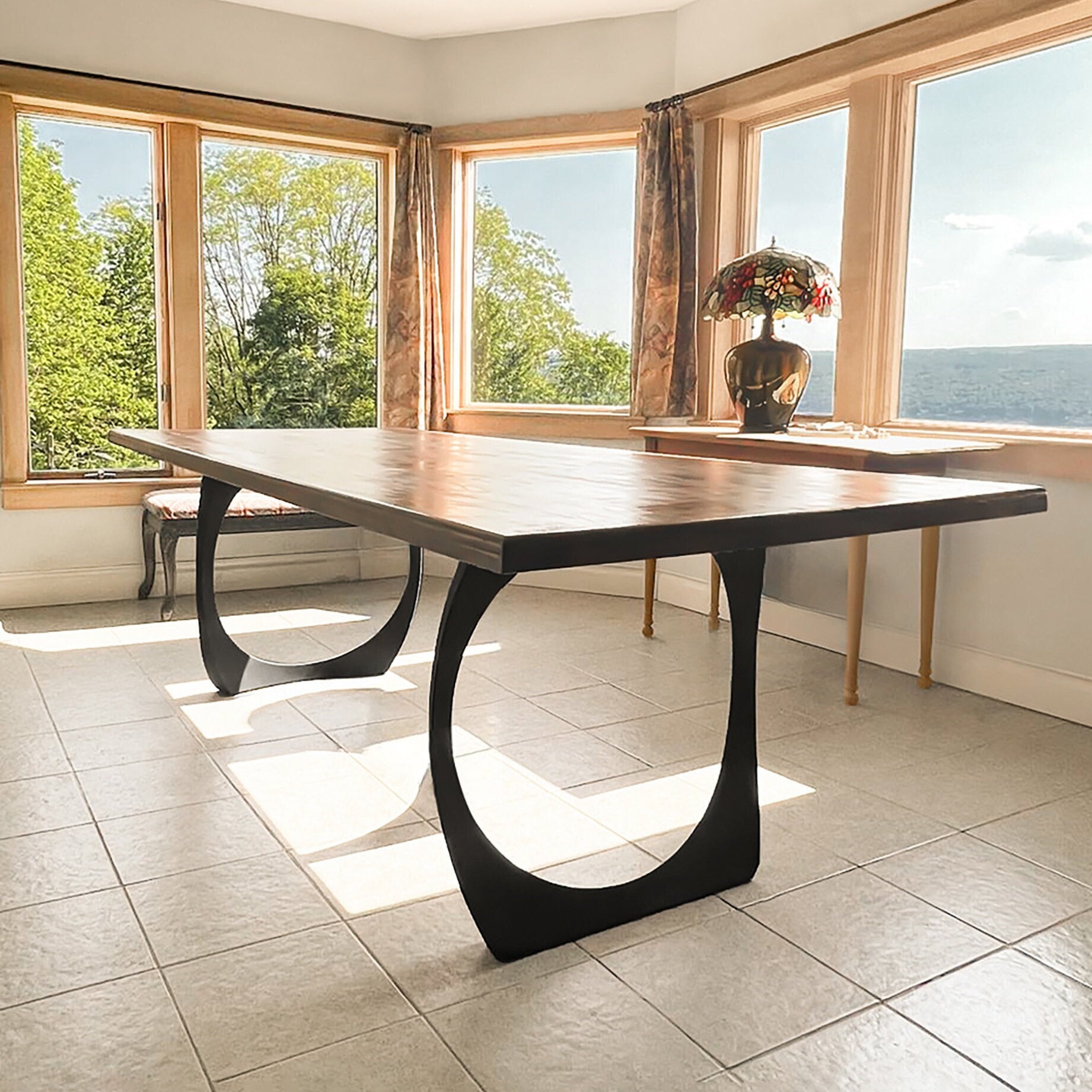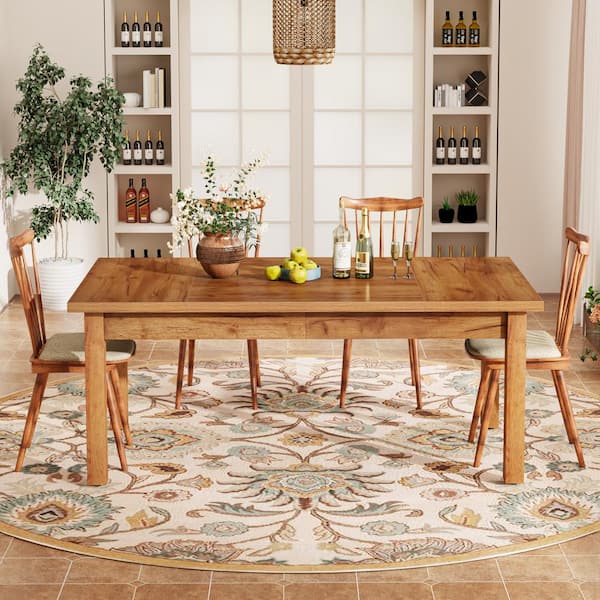Top Fads in Dining Room Table Legs to Elevate Your Eating Room
Top Fads in Dining Room Table Legs to Elevate Your Eating Room
Blog Article
Choosing the Perfect Dining Table: What Styles Job Best for Your Home?
Choosing the excellent eating table for your home can be a nuanced process that balances aesthetic appeals and functionality. Whether your area leans in the direction of traditional style, modern-day minimalism, rustic appeal, or industrial stylish, the variety of designs offered can accommodate varied tastes. Each layout offers unique benefits and difficulties that can either enhance or interrupt your dining location's consistency. Comprehending exactly how different products, shapes, and dimensions interact with your existing design is crucial. To browse these options successfully and find a table that truly enhances your home, take into consideration the complying with elements thoroughly.
Evaluating Your Area
Assessing the measurements and layout of your dining location is a crucial first action in choosing the ideal eating table. Begin by gauging the length and width of the room, representing entrances, windows, and other building features that can affect table positioning. This ensures that your table not just fits however likewise permits comfy motion around it.
Consider the number of people you normally entertain. A table must fit your home's everyday needs while providing sufficient versatility for occasional visitors. Generally of thumb, assign at least 24 inches of table width per person to make certain a comfortable dining experience.
It's additionally crucial to maintain appropriate clearance around the table. Ideally, there need to go to least 36 inches between the table side and walls or other furniture, making it possible for simple access and motion. For spaces where chairs with arms or additional storage space units like buffets are involved, boosting this clearance to 48 inches is recommended.
Lighting and ambience play significant duties also. Ensure that your eating table lines up with existing lighting fixtures or prepare for adequate lighting solutions. This extensive spatial assessment warranties that your eating table not only fits literally but additionally harmonizes with your area's total performance and visual.
Popular Table Styles

Conventional table often include ornate details, rounded legs, and abundant wood finishes, stimulating a sense of classic beauty. They are best for homes with timeless decor or those seeking to add a touch of refinement to their eating location.
Modern dining tables focus on simpleness and tidy lines, typically including materials like glass and steel. These tables are suitable for modern spaces, supplying a smooth and uncluttered look that matches minimal style ideologies.
Rustic table, on the various other hand, emphasize all-natural materials and a handcrafted look - dining room table legs. They often include recovered wood and a troubled finish, producing a warm and inviting environment. These tables function well in farmhouse-style homes or those looking for a cozy, natural feel
Industrial dining tables combine raw materials such as steel and timber, typically showcasing a practical visual. This design is appropriate for lofts or metropolitan spaces, including a touch of sturdy see beauty and durability to the dining experience.
Each design uses distinct benefits, making it necessary to select one that straightens with your home's overall design and your individual choices.
Material Choices
When selecting a table, the choice of material plays an essential function in determining both the table's aesthetic appeals and performance. Wood, steel, glass, and composite materials each deal special advantages and difficulties, making it important to straighten the material with your home's style and lifestyle requirements.
Timber is a timeless and versatile alternative, readily available in varieties such as oak, walnut, and mahogany. Known for its toughness and warmth, timber enhances both conventional and modern insides. Nevertheless, it requires routine upkeep to prevent scrapes and warping.
Metal tables, usually crafted official statement from stainless-steel, aluminum, or wrought iron, are praised for their contemporary appeal and robustness. They are especially matched for industrial or minimal settings yet can be vulnerable to dents and might really feel chilly to the touch.
Glass table bring an air of beauty and visibility, suitable for smaller sized rooms as they create an illusion of more room. While easy to tidy, glass can be prone to smudges and needs careful taking care of to avoid chips and cracks.
Composite materials, such as MDF and plywood, deal economical and personalized services, though they might do not have the durability of all-natural products. Selecting the right product ensures your table is both a useful asset and a visual pleasure.
Sizes And Shape Considerations
After determining the appropriate product for your dining table, the following consideration is selecting the right form and size to match your area. Conversely, rounded tables promote a sense of intimacy and are excellent for smaller eating locations, urging discussion by eliminating corners and making everyone feel equally consisted of.
As a policy of thumb, allot at the very least 24 inches of table width per person to guarantee comfy eating. In addition, consider the table's clearance space: there must be at the very least 36 inches in between the table edge and the walls or other furniture. Extending tables use adaptability if you frequently organize bigger events, giving extra seating when needed without occupying additional area daily.
Matching Your Decoration
Picking an eating table that balances with your existing style is pivotal in producing a cohesive and welcoming room. A smooth, minimal table with clean lines is optimal for a modern home, while a vintage, luxuriant table fits a more conventional setting.
Shade and product are equally significant. If your style includes warm tones and all-natural materials, consider a wooden table to boost the natural feel. On the other hand, a glass or steel table might be better suited in an area dominated by awesome colors and industrial aspects. Focus on the surface, as it needs to mirror various other furnishings and fixtures to preserve consistency.
A rough-hewn, reclaimed wood table can add personality to a rustic area, while a sleek marble surface area can raise an elegant eating location. A well-matched dining table not just enhances visual appeal yet also enriches the general eating article experience.

Conclusion
Picking the excellent table requires cautious consideration of area, design, products, shape, and size (dining room table legs). Conventional tables complement classic insides with rich timber coatings, while modern-day tables fit modern settings via glass and metal. Rustic layouts present heat via natural products, and industrial designs boost city atmospheres with raw components. Balancing the table with existing decoration makes certain both performance and visual allure, adding to a cohesive and aesthetically pleasing eating location.
Report this page